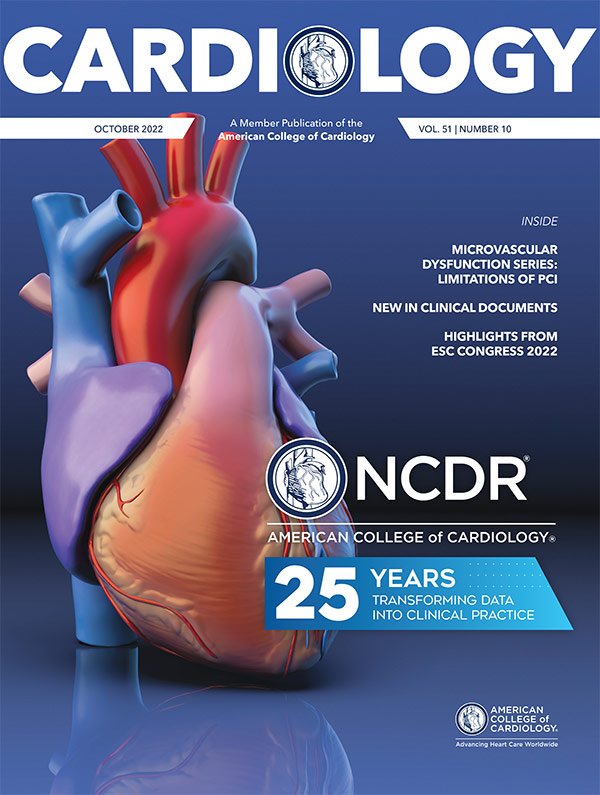ACC, AHA Release Key Data Elements and Definitions For Chest Pain and AMI
The ACC and the American Heart Association have released a new report outlining key data elements and definitions for chest pain and acute myocardial infarction (AMI). The document, which was also published in the Journal of the American College of Cardiology, is part of ongoing clinical data standard efforts to “identify, define, and standardize data elements relevant to clinical topics in cardiovascular medicine, with the primary goal of assisting data collection and use by providing a compilation of data elements and definitions applicable to various cardiovascular conditions.”
The data elements and definitions included in the document are based on the 2021 ACC/AHA Chest Pain Guideline and are “designed to focus on serious cardiovascular causes of chest pain as they might be encountered in emergency departments.” The document groups data elements into three broad guideline-based categories – chest pain, myocardial injury, and myocardial infarction – and outlines data elements for etiology of chest pain syndromes for potentially serious cardiac, as well as certain noncardiac, causes. In keeping with the new Chest Pain Guideline, chest pain syndromes are categorized using the terms “cardiac,” “possible cardiac,” and “noncardiac.” Also included in the document, are data elements for risk stratification scoring according to several common risk scoring algorithms and for procedure-related myocardial injury and procedure-related MI.
Not included in the document are data elements for patient demographics, history, cardiovascular risk factors, laboratory testing and revascularization or other therapies. Additionally, the terms “typical” and “atypical” as descriptors of chest pain or anginal syndromes are not used.
According to Writing Committee Chair H.V. (“Skip”) Anderson, MD, FACC, and Vice Chair Sofia Carolina Masri, MD, the “lack of both uniform definitions and standardized data structures has impeded assessment for quality and performance improvement of clinical care and research” to date. They note that “standardizing the reporting systems could go a long way toward spreading standardization and interoperability.” The new data standards and definitions “should be broadly applicable in various settings, including patient care, electronic health records (EHRs), quality and performance improvement initiatives, registries, and public reporting programs,” they add.
The report was developed by the AHA/ACC Joint Committee on Clinical Data Standards and developed in collaboration with the American College of Emergency Physicians and Society for Cardiovascular Angiography and Interventions. It was endorsed by the Society for Academic Emergency Medicine.
Clinical Topics: Invasive Cardiovascular Angiography and Intervention, Interventions and Imaging, Angiography, Nuclear Imaging
Keywords: Registries, Algorithms, Angiography, Patient Care, Reference Standards, Emergency Medicine, Risk Assessment, Chest Pain, Myocardial Infarction, Electronic Health Records, Cardiovascular Diseases, Cardiology Magazine, ACC Publications
< Back to Listings

